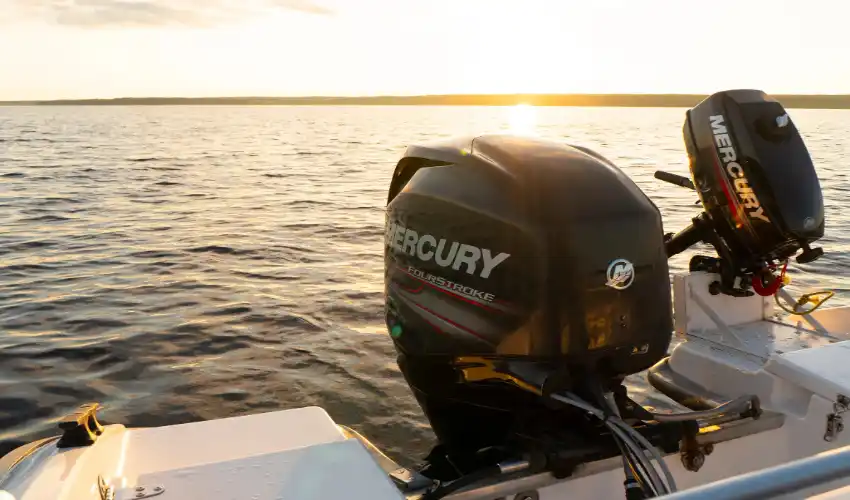
How to Choose the Right Outboard Motor for Your Boat
Choosing the right outboard motor for your boat is essential for optimal performance, fuel efficiency, and a smooth boating experience. Whether you’re fishing, cruising, or using your boat for watersports, the right motor ensures safety, reliability, and enjoyment on the water. In this guide, we’ll explore the key factors you need to consider when selecting an outboard motor that suits your boat and boating needs.
Understand Your Boating Needs
Before diving into motor specifications, think about how you plan to use your boat. Are you using it for leisurely lake cruises, fishing in saltwater, or high-speed watersports? Your intended use plays a critical role in determining the type and power of the outboard motor you’ll need. For example, a quiet and fuel-efficient four-stroke motor is great for fishing trips, while a powerful two-stroke motor may be better for speed and performance.
Match the Motor to Your Boat Size and Weight
The size and weight of your boat determine the horsepower (HP) range of your outboard motors for sale. If your motor is underpowered, your boat will struggle to get on plane and may be unsafe. If it’s overpowered, you risk damaging the boat or violating local boating regulations. Check your boat’s capacity plate or manufacturer specifications to find the recommended horsepower range and maximum weight.
Here’s a general rule:
- Small boats (less than 16 ft): 2.5 to 20 HP
- Mid-size boats (16–20 ft): 40 to 90 HP
- Large boats (20+ ft): 100 HP and above
Two-Stroke vs. Four-Stroke Outboard Motors
Outboard motors come in two main types: two-stroke and four-stroke. Each has its pros and cons:
- Two-Stroke Motors: Lighter, faster acceleration, generally less expensive. Ideal for high-speed activities and smaller boats. However, they are louder and less fuel-efficient.
- Four-Stroke Motors: Quieter, cleaner emissions, and more fuel-efficient. Great for long-distance cruising and fishing. They are heavier and tend to cost more upfront.
In recent years, four-stroke motors have gained popularity due to improved technology and stricter environmental regulations.
Consider Shaft Length
Matching the shaft length of the motor to your boat’s transom height is crucial for performance. If the shaft is too short, the propeller may not stay submerged. If it’s too long, it can create drag and reduce efficiency. Common shaft lengths include:
- Short shaft (15 inches): Ideal for small boats and dinghies
- Long shaft (20 inches): Suitable for most medium-sized boats
- Extra-long shaft (25+ inches): Used for sailboats or deep-V hulls
Always measure your boat’s transom before buying a motor.
Fuel Efficiency and Environmental Impact
Today’s boaters are more conscious of fuel costs and environmental impact. Modern four-stroke engines are designed for lower emissions and better fuel economy. Some manufacturers also offer EFI (Electronic Fuel Injection) systems, which improve starting performance and optimize fuel usage.
If you’re planning frequent or long trips, investing in a fuel-efficient motor can save money and reduce your carbon footprint.
Electric Outboard Motors – A Growing Trend
Electric outboard motors are becoming increasingly popular due to their quiet operation, zero emissions, and low maintenance. While not ideal for high-speed or long-distance use, they are perfect for small boats, inland waterways, and environmentally sensitive areas.
Though the initial cost may be higher, electric motors have fewer moving parts, which means lower maintenance costs over time.
Brand Reputation and Warranty
When choosing an outboard motor, stick with reputable brands like Yamaha, Mercury, Honda, Suzuki, or Tohatsu. These manufacturers offer proven performance, excellent customer service, and extensive service networks.
Also, consider the warranty. A longer warranty provides peace of mind and can be a sign of the manufacturer’s confidence in their product. Compare warranty terms and service availability in your area before making a decision.
Don’t Forget Maintenance and Support
Routine maintenance is key to keeping your motor in top shape. Choose a motor with easy access to parts, filters, and drain plugs. Some modern motors include self-diagnostic systems or mobile apps that alert you to maintenance needs.
Also, ensure there is a local service center or certified technician nearby for regular servicing or unexpected repairs.
Budget Considerations
Outboard motors vary widely in price depending on horsepower, technology, and features. Set a budget but be realistic. Sometimes, spending a bit more upfront can save money in the long run through fuel efficiency and reduced maintenance. Also consider used motors, but always inspect them thoroughly or buy from a certified dealer.
Conclusion
Choosing the right outboard motor for your boat involves balancing performance, size, fuel type, budget, and boating needs. By understanding the specific requirements of your boat and how you plan to use it, you can select a motor that offers reliability, efficiency, and enjoyable performance on the water. Take the time to research, compare brands, and consult experts if needed. With the right motor, every boating trip will be smoother, safer, and more fun.
